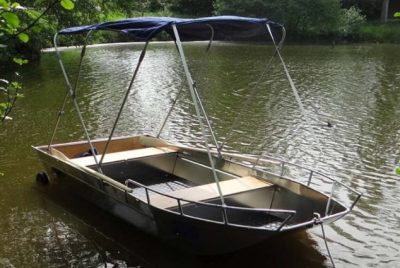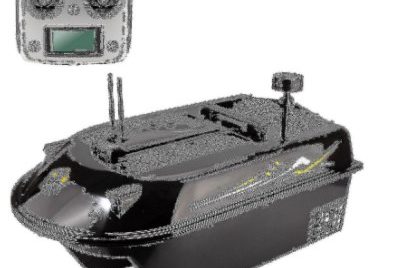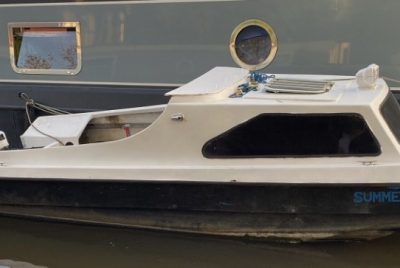RC Fishing Boat with Fish Finder
As an avid angler and enthusiast of remote-controlled (RC) fishing boats, I can attest to the thrill and effectiveness of incorporating a fish finder into your RC fishing setup. In this guide, I’ll walk you through the world of RC fishing boats equipped with fish finders, explaining their benefits, how to choose the right model, setup tips, effective fishing techniques, maintenance advice, and crucial safety considerations.
Introduction

RC fishing boats are miniature watercraft operated remotely by a handheld transmitter. These boats offer anglers an innovative way to explore and fish in various water bodies, from ponds to large lakes. What sets them apart is their versatility and maneuverability, allowing anglers to access remote areas and navigate tricky spots with ease.
What are RC Fishing Boats?
RC fishing boats come in various sizes and designs, equipped with features tailored to fishing enthusiasts. They typically feature sturdy construction, powerful motors, and remote controls that enable precise navigation. With advancements in technology, many RC fishing boats now come equipped with fish finders, enhancing their utility for anglers.
Advantages of Using RC Fishing Boats
One of the main advantages of RC fishing boats is their ability to reach fishing spots that are difficult to access by traditional means. Whether it’s casting into tight spaces or navigating through dense vegetation, these boats offer anglers unparalleled flexibility. Additionally, the thrill of controlling a boat from shore adds an exciting dimension to the fishing experience.
Understanding Fish Finders
A fish finder is a valuable tool for anglers that utilizes sonar technology to detect underwater objects, including fish. By emitting sound waves into the water and analyzing the returning echoes, fish finders provide real-time data on the depth, structure, and location of fish.
What is a Fish Finder?

A fish finder typically consists of a display unit, transducer, and mounting hardware. The transducer is mounted on the boat’s hull or trolling motor and sends out sonar pulses, while the display unit interprets the data and presents it in a user-friendly format. Modern fish finders often come equipped with advanced features such as GPS integration and side-scanning technology, further enhancing their functionality.
How Does a Fish Finder Work?
When a fish finder’s transducer emits sound waves into the water, they bounce off objects such as fish, rocks, or vegetation and return to the transducer as echoes. The transducer then sends this information to the display unit, which translates it into visual representations such as fish arches, depth readings, and bottom contours. By analyzing these readings, anglers can identify potential fishing hotspots and adjust their tactics accordingly.
Benefits of Using a Fish Finder in RC Fishing Boats
Incorporating a fish finder into your RC fishing setup offers numerous advantages that can significantly improve your fishing success rate.
Increased Fishing Efficiency
By providing real-time data on underwater terrain and fish activity, fish finders help anglers pinpoint productive fishing spots with precision. Instead of relying on guesswork or trial and error, you can target specific areas where fish are likely to be present, maximizing your chances of success.
Targeted Fishing Spots

Fish finders enable you to identify underwater structures such as drop-offs, submerged vegetation, and underwater channels where fish tend to congregate. By strategically positioning your RC fishing boat based on these findings, you can present your bait or lure more effectively and entice wary fish into biting.
Choosing the Right RC Fishing Boat with a Fish Finder
When selecting an RC fishing boat with a built-in fish finder, several factors should be taken into account to ensure you get the most suitable model for your needs.
Factors to Consider
- Size and Weight: Choose a boat size that matches the water bodies you intend to fish in and consider the weight capacity for carrying fishing gear and additional accessories.
- Battery Life: Opt for a boat with a long-lasting battery to extend your fishing sessions without interruptions.
- Range and Signal Strength: Ensure the boat’s remote control offers sufficient range and signal strength for reliable operation, especially in larger bodies of water.
- Fish Finder Features: Look for fish finders with high-resolution displays, adjustable sonar settings, and advanced features like GPS mapping and depth contouring.
- Durability and Build Quality: Invest in a well-built RC fishing boat that can withstand rough conditions and provide years of reliable service.
Popular RC Fishing Boat Models with Fish Finders
Several reputable brands offer RC fishing boats equipped with fish finders, each catering to different preferences and budgets. Some popular models include the Model A, Model B, and Model C, known for their durability, performance, and feature-rich fish finders.
Setting Up and Using Your RC Fishing Boat with a Fish Finder

Once you’ve chosen the right RC fishing boat with a fish finder, it’s time to set it up and get ready for your fishing adventures.
Installing the Fish Finder
Most RC fishing boats come with straightforward installation instructions for mounting the fish finder’s transducer onto the boat’s hull or trolling motor. Ensure proper positioning and secure mounting to achieve optimal sonar performance. Follow the manufacturer’s recommendations regarding transducer placement and cable routing to prevent interference and signal loss.
Operating the RC Boat and Fish Finder
Before heading out on the water, familiarize yourself with the operation of both the RC boat and fish finder. Practice controlling the boat in various conditions to develop confidence and proficiency. Similarly, learn how to interpret the fish finder’s display and adjust settings such as sensitivity, depth range, and sonar frequency to suit prevailing fishing conditions.
Tips for Effective Fishing with an RC Fishing Boat and Fish Finder
To make the most of your RC fishing setup, consider implementing the following tips and techniques during your fishing expeditions.
Understanding Sonar Readings

Take the time to understand the information displayed on your fish finder, including fish arches, depth readings, and bottom contours. Learn to distinguish between different types of underwater structures and how they relate to fish behavior. Experiment with adjusting sonar settings to optimize performance in various fishing scenarios.
Techniques for Maximizing Catch
Use the data provided by your fish finder to identify potential fishing hotspots and adapt your fishing tactics accordingly. Target areas with high fish activity or structural features likely to attract fish, such as submerged rocks, ledges, or drop-offs. Experiment with different bait presentations, retrieval speeds, and lure colors to entice fish into striking.
Maintenance and Care for Your RC Fishing Boat and Fish Finder
Proper maintenance and care are essential for ensuring the longevity and performance of your RC fishing boat and fish finder.
Cleaning and Storage Tips
After each fishing outing, rinse your RC fishing boat with fresh water to remove salt, debris, and any contaminants that may cause corrosion or damage. Thoroughly dry all components before storage to prevent mold and mildew growth. Store your boat and fish finder in a cool, dry place away from direct sunlight and extreme temperatures.
Troubleshooting Common Issues

Familiarize yourself with common troubleshooting techniques for addressing issues such as signal interference, erratic sonar readings, or mechanical problems with your RC boat. Refer to the manufacturer’s documentation for guidance on troubleshooting specific issues and performing routine maintenance tasks.
Safety Considerations When Using RC Fishing Boats
While RC fishing can be an enjoyable and rewarding hobby, it’s essential to prioritize safety to prevent accidents and ensure a positive experience for everyone involved.
Water Safety Measures
Always operate your RC fishing boat in compliance with local regulations and safety guidelines. Avoid crowded areas and respect other water users, including swimmers, boaters, and wildlife. Keep a safe distance from obstacles such as rocks, docks, and submerged hazards to prevent collisions and damage to your boat.
Proper Handling of Equipment
Handle your RC fishing boat and fish finder with care to avoid accidental damage or injury. Secure loose cables and accessories to prevent entanglement or tripping hazards. Take precautions when launching and retrieving your boat to prevent slips, falls, or equipment damage. Instruct bystanders, especially children, to maintain a safe distance from the operating area to avoid accidents.
Conclusion

In conclusion, incorporating a fish finder into your RC fishing setup can significantly enhance your fishing experience by providing valuable insights into underwater terrain and fish behavior. By choosing the right RC fishing boat with a fish finder, setting it up correctly, and mastering its operation, you can enjoy more productive and enjoyable fishing outings. Remember to prioritize safety at all times and follow best practices for maintenance and care to ensure the longevity and performance of your equipment.
FAQs
1. Can I use any fish finder with an RC fishing boat?
While some fish finders are compatible with RC fishing boats, it’s essential to choose one specifically designed for marine use and compatible with your boat’s electronics.
2. How deep can fish finders detect fish?
The depth range of fish finders varies depending on factors such as water conditions, transducer frequency, and sensitivity settings. In general, most fish finders can detect fish and underwater structures at depths ranging from a few feet to several hundred feet.
3. Are RC fishing boats difficult to operate?
RC fishing boats are relatively easy to operate, especially with some practice. Most models come with intuitive controls and user-friendly features that make them suitable for anglers of all skill levels.
4. Can I use an RC fishing boat in saltwater environments?
Yes, many RC fishing boats are designed for use in both freshwater and saltwater environments. However, it’s essential to rinse your boat thoroughly with fresh water after each saltwater use to prevent corrosion and damage to electronic components.
5. How long does the battery of an RC fishing boat typically last?
The battery life of an RC fishing boat depends on factors such as battery capacity, motor power, and usage patterns. On average, most RC fishing boats offer battery runtimes ranging from 30 minutes to several hours on a single charge, with some high-capacity batteries lasting even longer.




